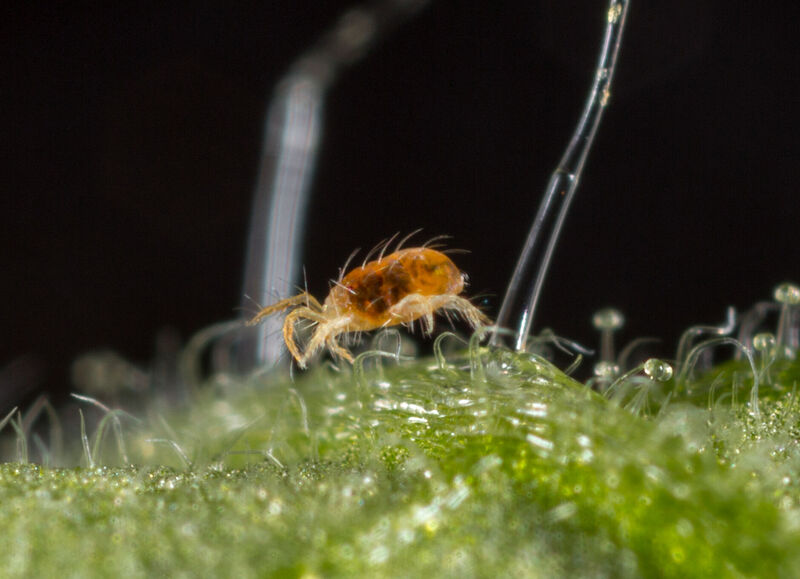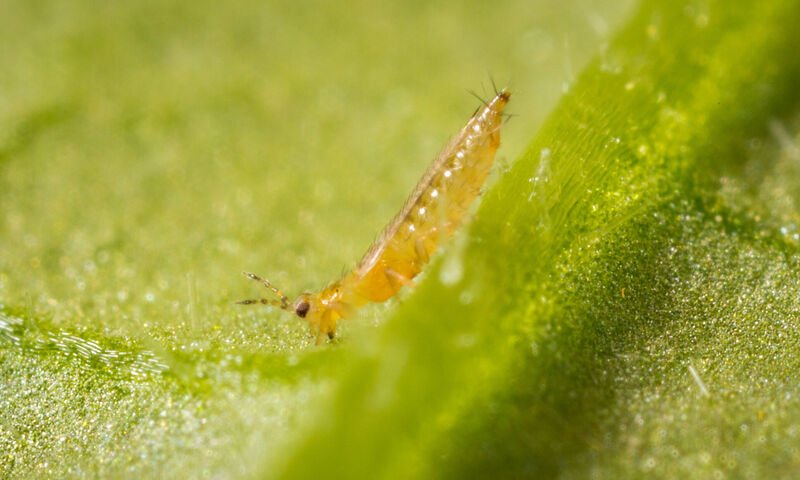
Spider mite and thrips are pests that are bound to turn up in strawberry cultivation. So how can you keep them at bay? Don’t panic: there are various natural enemies that are ready to help you out. Here are some of your options.

Spider mite
Although, the spider mite is always a threat, this doesn’t mean that a crop will always suffer. There are ways to keep spider mites at bay, one of them being predatory mites – the spider mite slayers. Using predatory mites as part of preventative and curative treatments can keep spider mite fully under control. There are two star products to choose from: Spidex and Spical-Plus.
- Spidex contains the predatory mite Phytoseiulus persimilis. This predatory mite takes no prisoners and isn’t a fussy eater. Whether eggs, larvae, nymphs, or adult mites, they’re all fair game for this voracious predator. It’s a true spider mite assassin and is mainly used curatively.
- Spical-Plus contains the predatory mite Neoseiulus californicus. The younger stages of the spider mite are in particular danger if this predatory mite is on the prowl. The predatory mite is a tough one and won’t be fazed if the spider mite makes itself scarce: it can survive for a while without prey and can even live off pollen.
Your climate and cultivation method will determine which of these two beneficials are more effective against spider mite. For indoor crops, a combination of Spical-Plus and Spidex is particularly effective at controlling the spider mite population. The predatory mites’ strength lies in how these two beneficials work together.
In outdoor crops only the curative treatment with Spidex is used, leaving Phytoseiulus to do the job on its own. Except when your climate is warm and dry, then Spical-Plus is preferred, as the predatory mites’ greater resistance to heat and drought means they are better able to control the spider mite population in these conditions. However, if the temperature is below 54°F, predatory mites are less active and will hide. Equally, falling temperatures lead to a decrease in the level of infestation.
 Western Flower Thrips Frankliniella occidentalis on a leaf
Western Flower Thrips Frankliniella occidentalis on a leaf
Thrips
Thrips should always be controlled preventively. If you see thrips in the crop, it’s already too late. Predatory mites can be used to kill thrips. There are many different species of predatory mites that attack thrips, and there are also many different strategies. The circumstances and type of cultivation determines which strategy is most appropriate.
- Swirski-Mite: This contains the predatory mite Amblyseius swirskii. This energetic mite actively hunts for the first larval stage of thrips in flowers, leaves, and fruits.
- Limonica: This product also contains a predatory mite, Amblydromalus limonicus. The mite is active at temperatures from 57°F and is especially bad news for larvae, both in the first and second stage.
- Thripex: This product contains the predatory mite Neoseiulus cucumeris. The predatory mite loves gorging on hatching eggs and larvae, and is active at temperatures from 59°F.
- Thripor-I: This product contains the predatory bug Orius insidiosus, which targets larvae and adult thrips.
- Entomite-M: This product contains the soil-dwelling predatory mite, Stratiolaelaps scimitus, that live on the soil around the plant and eat the thrips pupae that fall to the ground.